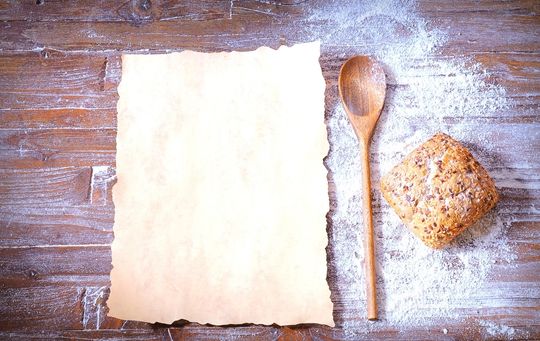In the kitchen, cooking temperatures are important. Understanding the function that temperature plays in the preparation of food is crucial because cooking is both a science and an art. Getting the temperature just right may significantly impact the flavor, texture, and overall quality of your food, whether you’re a professional chef or a home cook.
At What Temperature Do You Cook? The cooking temperature varies depending on the specific recipe and the type of food being prepared. Common cooking temperatures range from 325°F (163°C) to 450°F (232°C) for baking, roasting, and grilling, while stovetop cooking often involves temperatures from low simmering at around 180°F (82°C) to high heat at 500°F (260°C) or more, depending on the cooking technique and desired outcome.

At What Temperature Do You Cook
Depending on what you are going to preparing, you should cook at a specific temperature. Always proper check the recipe or go to a cooking manual to make sure you’re using the right temperature.
The safe minimum internal temperature for meats is normally 165°F, while the range for baked items is typically 350°F to 375°F. Following points are given below to understand the temperature:
I. Understanding internal temperature
The interior temperature of the food is one of the crucial cooking temperatures. It is essential to check that the meal is thoroughly cooked and safe to eat at this temperature, which is found in the food’s centre.
To kill any potentially hazardous germs, meals should be heated to their safe internal temperatures, which vary depending on the food. For poultry, the safe internal temperature is 165°F, while 145°F is the safe internal temperature for beef.
As depending solely on appearance or cooking time is not always dependable, it is crucial to use a meat thermometer to confirm that the interior temperature of the dish is attained.

II. The importance of preheating
Another crucial component of temperature-controlled cooking is preheating.
The cooking surface must be preheated to the proper temperature before cooking, whether you’re using an oven, a grill, or a pan. As a result, the food cooks more evenly and is less likely to cling.
To guarantee that the temperature is uniform across the entire cooking surface, for instance, it’s crucial to preheat a grill for at least 10 minutes before cooking.
III. The role of heat in cooking techniques
Many cooking methods depend on heat, and the temperature needed varies depending on the method.
As an illustration, sautéing needs high heat, while simmering needs medium heat. Achieving the desired result depends on knowing the temperature needed for each cooking method.
For instance, using a high heat to simmer a sauce can make it break, while using a low heat to sauté veggies can produce a texture that is limp and overdone.

IV. The importance of temperature control
Cooking requires precise temperature control. Maintaining a constant temperature while cooking is crucial, whether you’re using an oven, a grill, or a pan.
By doing this, you can make sure that the food is cooked consistently and without burning or drying out.
For instance, while using an oven, it’s crucial to put the food in the middle to guarantee a constant temperature and to prevent putting it too close to the heating sources.
V. Temperature and food safety
Additionally crucial to ensuring food safety is temperature.
In order to stop the formation of dangerous bacteria, it is essential to keep food at the proper temperature when it is being prepared, stored, and cooked.
For instance, to stop bacteria from growing, perishable goods like meats, dairy products, and vegetables should be kept in storage below 40°F, whereas hot meals should be maintained at temperatures above 140°F.
Conclusion
Therefore, understanding the significance of cooking temperatures is critical for everyone who wants to prepare food that is both delicious and safe.
Temperature plays a significant role in food preparation. If you want to get the greatest results in the kitchen, whether you’re a professional chef or a home cook, you need become an expert in temperature management, preheating, cooking methods, and food safety.
You’ll soon gain confidence in the kitchen and be able to produce scrumptious foods that your family and friends will enjoy.
People Also Ask
What Foods Do You Cook to 145 Degrees?
Foods like pork, veal, and fish should be cooked to an internal temperature of 145 degrees Fahrenheit to ensure they are safe to eat.
Can I Cook Something at 375 Instead of 400?
Yes, you can cook something at 375 degrees Fahrenheit instead of 400, but it may require a slightly longer cooking time to achieve similar results.
What Is Cooked at 135 Degrees?
Sous vide cooking often involves cooking foods at 135 degrees Fahrenheit to achieve precise and consistent results while preserving their natural flavors and textures.
What Cooks at 400 Degrees?
Many baked goods, such as cookies and certain types of bread, are typically cooked at 400 degrees Fahrenheit to achieve a golden brown crust and proper texture.
Frequently Asked Questions
What Temperature Should I Cook Chicken?
You should cook chicken to an internal temperature of 165°F (74°C) to ensure it’s safe to eat.
What Temperature Should I Cook Beef?
The recommended internal temperature for cooking beef varies based on your preferred level of doneness:
- Rare: 125-130°F (52-54°C)
- Medium Rare: 135-140°F (57-60°C)
- Medium: 145-160°F (63-71°C)
- Well Done: 160°F (71°C) and above.
What Temperature Should I Cook Fish?
Fish should be cooked to an internal temperature of 145°F (63°C) or until it flakes easily with a fork.
What Temperature Should I Cook Vegetables?
Vegetable cooking temperatures vary, but a general guideline is to roast them at 400°F (200°C) or steam until they are tender to your liking.







